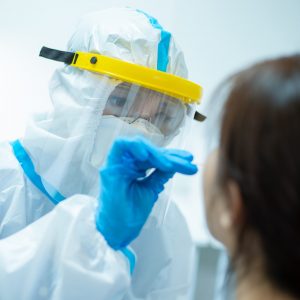
The global coronavirus pandemic has deeply affected manufacturing in the United States and around the world. The disruption of global supply chains started with the closing of factories in China and is continuing as the pandemic now grips The Americas. But these setbacks have also created multiple opportunities for Additive Manufacturing, which is experiencing a resurgence because of COVID-19.
Additive Manufacturing (AM) software is a transformative approach to industrial production, comprising technologies that grow three-dimensional objects one superfine layer at a time. 3D printing is an essential component of AM, and these terms are sometimes used interchangeably. This manufacturing method employs computer-automated manufacturing (CAM) processes to fabricate physical 3D objects layer by layer from computer-aided design (CAD) models. With 3D printing technology, objects are created by depositing materials onto a substrate. This technology is hugely versatile, as the deposited materials can be plastics, metals, powders, ceramics, liquids or even living cells. The 3D printing process is accurate, repeatable, scalable, but also cost-effective for small production runs or even single prints of highly customized parts.
Notably, 3D printing has been used over the recent months to fill the supply chain gaps in multiple industries. A particular example of Additive Manufacturing’s “hero moment” during COVID-19 is in the use of 3D printing by  individuals, universities, research organizations and industrial manufacturers to address the critical shortages of Personal Protective Equipment (PPE) for healthcare workers, first responders and all the other essential personnel on the frontlines of fighting the pandemic or providing vital services.
individuals, universities, research organizations and industrial manufacturers to address the critical shortages of Personal Protective Equipment (PPE) for healthcare workers, first responders and all the other essential personnel on the frontlines of fighting the pandemic or providing vital services.
Manufacturers already using 3D printing equipment have pivoted to make different products to address the critical PPE shortages. For example, a maker of eyeglasses switched from printing custom frames to produce a new line of protective custom-made eyewear that can incorporate prescription lenses to reduce the amount of gear needed by healthcare professionals. Another example is a maker of ergonomic and custom footwear which now produces Powered Air-Purifying Respirator (PAPR) hoods for hospitals and special 3D printed adapters that make these hoods compatible with respirator models from four different manufacturers.
America Makes is the nation’s leading and collaborative partner in Additive Manufacturing and 3D printing technology research, discovery, creation, and innovation. In an effort to be the bridge connecting the need for medical PPE with additive manufacturers capable of 3D printing it, America Makes created a COVID-19 repository. It has joined forces with the FDA, NIH, and VA to leverage their public health and safety expertise to manufacture and deliver safe PPE to medical providers. To-date, the repository resulted in 200,000 pieces of PPE from 470 manufacturers.
To further spur innovation and accelerate delivery of safe and effective PPE, America Makes organized a Fit to Face—Mask Design Challenge. More than a 100 design entries were submitted for review by the VA, NIH and FDA and the challenge resulted in new mask designs offering considerable fit improvements. These designs are showcased on the America Makes and the NIH 3D Print Exchange websites and available for use.

Life threatening ventilator shortages have been in the news since the beginning of the COVID-19 pandemic in the United States. Following successful use in prior national health emergencies, the open source design for a ventilator splitter and flow limiters allows hospitals to support up to four patients on a single ventilator should a need arise. The design calls for the Y-shaped splitters and cup-shaped flow limiters to be made with Fused Deposition Modeling (FDM) printers, though they can be printed with other technologies, for example the Digital Light Processing (DLP).
Another barrier to combating the spread of the SARS-CoV-2 virus has been the shortage of specialized nasopharyngeal (NP) swabs, a component needed for the population-wide COVID-19 testing. Here too, Additive Manufacturing can help. A clinical trial conducted by a multidisciplinary team at a major Boston-area hospital evaluated more than 100 designs and determined that four novel 3D-printed swabs “showed excellent concordance with the controls in a clinical trial”. “It took just 22 days from the time we identified the swab shortage to when our trial clinically validated the first new swab capable of high-throughput manufacture.”
These are just some examples of the efforts by the Additive Manufacturing community, composed of different size manufacturers, universities and research organizations, governmental agencies and even individual enthusiasts empowered to use 3D printing technology to make a difference in the fight against COVID-19. There will be challenges with standardization to meet the FDA compliance standards and medical industry certifications as these efforts scale to mass-production. One thing is clear: the setbacks brought on by the global coronavirus pandemic have also created multiple opportunities for Additive Manufacturing to offer novel solutions to the current crisis and beyond.
